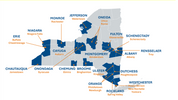If your business offers products or services to the public, do you have a price list? Do you post it on the internet?
If yours is a highly regulated industry like healthcare, where most of your invoices are reimbursed by insurance and government programs, is it acceptable to say your prices are too complicated to make public in a spreadsheet, or that you want to keep your negotiated prices private?
In 2021, the Department of Health and Human Services (DHHS) issued a new federal rule requiring hospitals to openly publish their prices on their websites. When hospitals sued, saying their negotiated prices were confidential and too complicated for the public, the court said in essence, if you know how to bill for your services, then you know how to list your prices.
A second rule issued one year ago requires the same of insurers and large employers.
How well are hospitals complying so far?
Progress has been made, but analysts say anywhere from 45%-75% of facilities in the U.S. have yet to fully comply. With penalties in the millions of dollars, and big enforcement actions taken against some non-compliant hospitals, observers say most hospitals are making some efforts to comply.
Under the rule, hospitals are supposed to publish two lists on their websites. First, a "machine readable" data set disclosing (a) the actual price, (b) the price negotiated with insurers, and (c) the discounted cash price, for each and every service, item, and drug they provide. Second, a "shoppable" list of at least 300 services for consumers to use for easy comparison. Consumers should theoretically be able to shop on the internet for their health care services just as they do for any other purchase. The transparency is aimed at increasing customer awareness of medical prices, spurring competition, quality improvement, and an overall reduction in medical costs.
Three notable national audits of hospital compliance have been recently released. The Centers for Medicare and Medicaid Services (CMS) looked at compliance by 600 randomly sampled facilities and found 70% of hospitals in their sample had published both lists.
The nonprofit Patients Rights Advocate sampled 2,000 facilities and found only 24.5% were compliant, up from just 16% in August, 2022.
A company called Turquoise Health that sells a computer platform to publish prices did their own audit of 4,900 acute care hospitals that had posted machine readable price data on the internet. It found 55% had significant compliance but only 24% were mostly complete.
Critics say there is a lack of standardization in the data from one platform to another, and the lists need to be actively curated for current price accuracy. CMS says it is offering technical assistance to facilities struggling to comply, but that it intends to take more aggressive enforcement action from now on.
"The rule aims to pull back the curtain on opaque hospital prices that may vary widely by hospital for the same service or even within the same hospital."
 unknownx500
unknownx500










